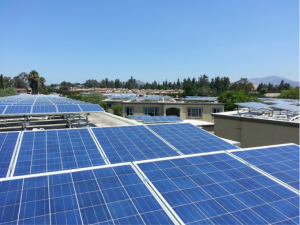 Utilities may hate rooftop solar for cutting into their profits, but they seem to like community solar. In these arrangements, consumers buy into a local solar PV project that could be small enough to fit on a Little League field. The local utility buys the electricity and then reduces the customers’ electric bills based on how much the utility purchases.
Utilities may hate rooftop solar for cutting into their profits, but they seem to like community solar. In these arrangements, consumers buy into a local solar PV project that could be small enough to fit on a Little League field. The local utility buys the electricity and then reduces the customers’ electric bills based on how much the utility purchases.
This is a great option for renters and apartment dwellers who don’t have their own roof space and therefore no access to their own solar arrays.
Bloomberg reports on the new wave of community solar taking off like rooftop did:
“Utilities see community solar as a bit more friendly,” said Drew Warshaw, vice president of community solar at NRG Energy. “By definition we have to use their transmission and distribution system, we pay for any upgrades needed and they continue to have a relationship with the customer.”
Still, utilities are closely watching how this initiative plays out, mainly related to lost revenue, according to Chief Executive Officer Jim Torgerson of Avangrid Inc., which owns utilities in New York and New England.
“Shared solar has much better economies of scale than rooftop but net metering issues really have to get resolved,” he said in a phone interview. “We think it’s worth the wholesale price of power, not the retail rate.”
Even with this utility hesitancy, the future for community solar seems brighter than for rooftop, given the more pro-utility bent of the contracts. So right now utilities may be okay with the arrangement.
But it may just be a matter of time before the technology improves enough to displace traditional large-scale utilities. As solar and battery prices come down, many communities will be able to essentially become their own utilities, with links to neighboring microgrids.
If that comes to pass, community solar may hasten the end of the traditional utility.
Leave a Reply
You must be logged in to post a comment.


